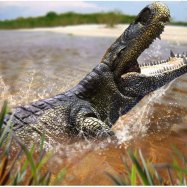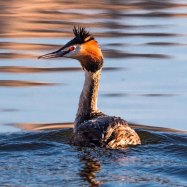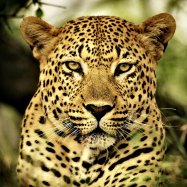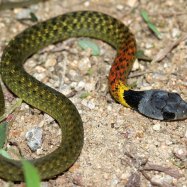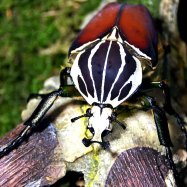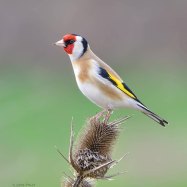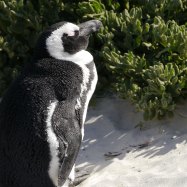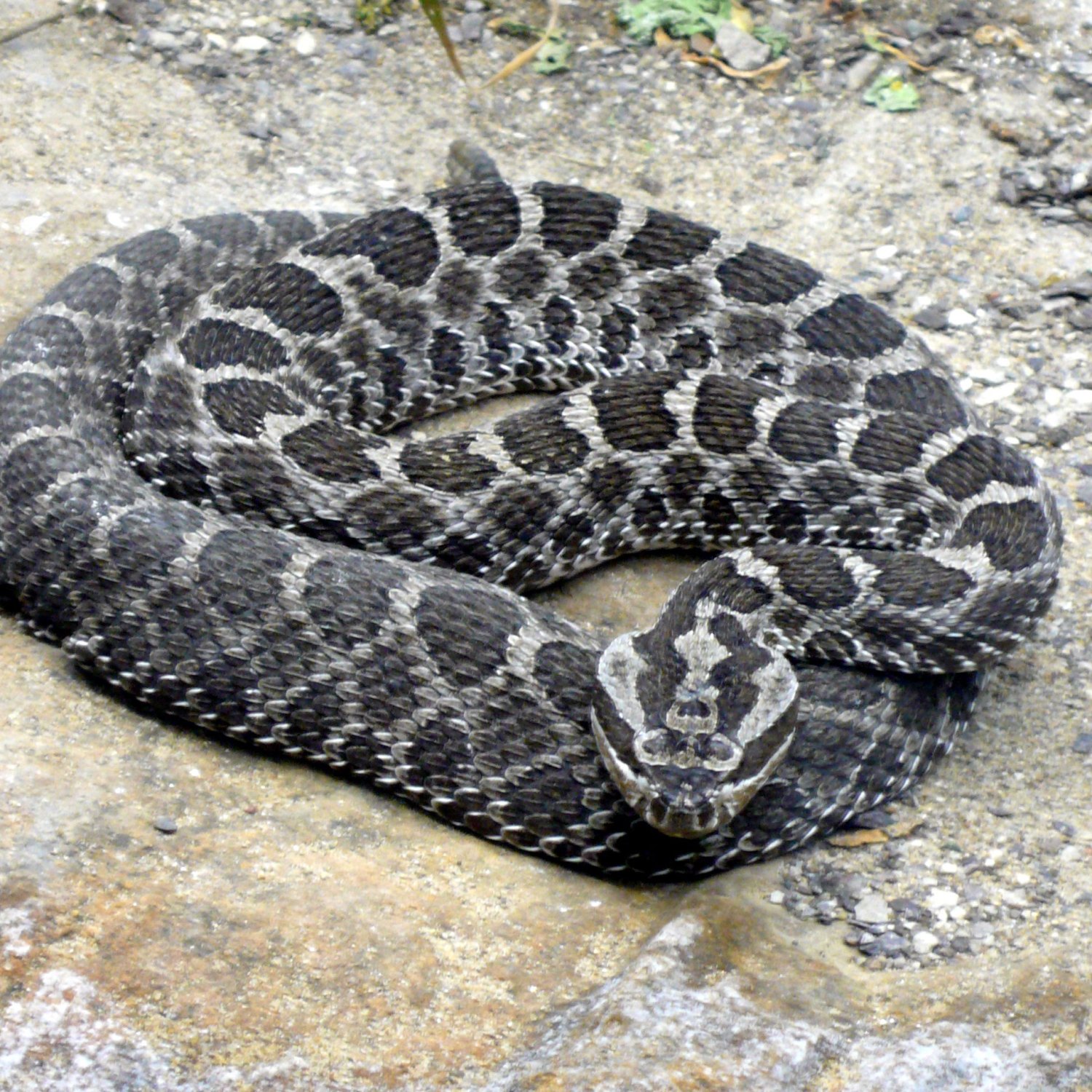
Massasauga
2-3 feet
The Massasauga, a member of the Viperidae family, is a small but dangerous snake found in the Prairies, grasslands, and wetlands. With a length of 2-3 feet and a thick, heavy body, it's known for its venomous bite. Keep your distance from this elusive snake in its natural habitats! #Massasauga #Viperidae #Prairies #Grasslands #Wetlands #SnakeSafety
Animal Details Summary:
Common Name: Massasauga
Kingdom: Animalia
Habitat: Grasslands, marshes, and semi-aquatic habitats
The Unique Massasauga: A Rare and Fascinating Reptile of North America
The natural world is full of wonders, and among the many creatures that roam the earth, the Massasauga stands out as a unique and fascinating reptile. With its scientific name Sistrurus catenatus, this venomous pit viper is commonly known as the Massasauga and is the smallest member of the rattlesnake family. Found only in North America, the Massasauga is a creature that has captured the curiosity and admiration of many.Belonging to the kingdom Animalia, phylum Chordata, and class Reptilia, the Massasauga is a reptile with an impressive lineage Massasauga. Its scientific classification places it in the order Squamata and family Viperidae, which also includes other venomous snakes such as the copperhead and cottonmouth. From its physical features to its habitat, behavior, and significance, the Massasauga has many unique traits that make it worthy of our attention.
Appearance and Habitat
The Massasauga is known for its distinctive body shape that sets it apart from other snakes. It has a thick and heavy-bodied build, and on average, it grows to a length of 2-3 feet. However, some individuals have been known to reach lengths of up to 30 inches. Its short and stout tail adds to its physical appearance, making it a unique sight to behold.One of the most striking features of the Massasauga is its coloration. While its base color can vary from grey to brown, it is adorned with dark brown blotches along its body. This unique pattern helps the Massasauga camouflage itself in its natural habitat, making it less visible to predators and prey alike Mulga Snake. Its head is also distinct, with two dark bars on either side, giving it a menacing look.
Massasaugas are generally found in grasslands, marshes, and semi-aquatic habitats. These areas provide ample opportunities for them to hunt and seek shelter. They are also known to thrive in prairies, grasslands, and wetlands, making them an integral part of the ecosystem in these regions. Unlike other snakes, Massasaugas do not have a wide distribution and are found only in North America, making them a rare and fascinating sight to encounter.
Feeding and Behavior
The Massasauga is a carnivorous creature, which means it primarily feeds on other animals. Its diet consists of small mammals, birds, and other reptiles, and in some cases, even insects. Using its heat-sensing pits, the Massasauga can strike with precision and immobilize its prey with its venomous bites. Its venom is also known to have a paralyzing effect, allowing the Massasauga to swallow its prey whole.Thanks to its venomous nature and dangerous reputation, the Massasauga is often perceived as an aggressive and territorial creature. However, this is far from the truth. The Massasauga is a shy and elusive reptile that prefers to avoid humans and other potential predators. Its non-aggressive nature only comes to light when it feels threatened, and even then, it will only bite as a last resort.
Importance and Conservation
The Massasauga plays an essential role in the ecosystem as both a predator and prey. Its presence helps keep the population of small mammals and other animals in check, preventing any imbalances in the food chain. In turn, it is also a vital food source for larger predators, such as birds of prey and other snakes.Unfortunately, the Massasauga's numbers have been steadily declining, making it an endangered species in many parts of North America. Human activities, such as habitat destruction and illegal poaching, are among the primary reasons for this decline. This unique reptile is also vulnerable to habitat loss due to urbanization, as well as death by accidental encounters with humans.
To help protect this precious species, various conservation efforts are in place, such as raising awareness, habitat restoration, and captive breeding programs. The United States and Canada, where the Massasauga is native, have also implemented laws and regulations to protect this species and its habitat. It is crucial for humans to understand the vital role the Massasauga plays in its ecosystem and take steps to ensure its survival and well-being.
Fascinating Facts about Massasaugas
- The word "Massasauga" is derived from the Chippewa word "massasauga" meaning "great river-mouth," referring to the snake's habitat.- Massasaugas are known to give birth to live young through a process called ovoviviparity, where the eggs develop within the mother's body and hatch internally before birth.
- Despite being venomous, the Massasauga's bite is not usually fatal to humans. Fortunately, the species is not known to be aggressive, and bites often occur only when threatened or disturbed.
- The Massasauga has an intricate network of heat-sensing pits between its nostrils and eyes, helping it to detect and locate prey.
- In the wild, Massasaugas can live up to 20 years, but in captivity, they can live for over 25 years.
In Conclusion
The Massasauga is a rare and fascinating reptile that is both feared and admired by those who encounter it. Its unique physical features, behavior, and significance in its ecosystem make it a creature worth learning about and protecting. As we continue to strive towards environmental conservation, it is crucial to acknowledge and appreciate the many wonders of nature, including the Massasauga.Despite being classified as an endangered species, efforts are being made to protect and preserve the Massasauga for future generations to admire and appreciate. By raising awareness and taking steps to minimize human impact on their natural habitat, we can ensure the survival of this incredible reptile and the delicate balance it plays in its ecosystem. Let us continue to marvel at this unique creature and work towards its conservation, because after all, the Massasauga is a true gem of North America.

Massasauga
Animal Details Massasauga - Scientific Name: Sistrurus catenatus
- Category: Animals M
- Scientific Name: Sistrurus catenatus
- Common Name: Massasauga
- Kingdom: Animalia
- Phylum: Chordata
- Class: Reptilia
- Order: Squamata
- Family: Viperidae
- Habitat: Grasslands, marshes, and semi-aquatic habitats
- Feeding Method: Carnivorous
- Geographical Distribution: North America
- Country of Origin: United States and Canada
- Location: Prairies, grasslands, and wetlands
- Animal Coloration: Grey or brown with dark brown blotches
- Body Shape: Thick and heavy-bodied
- Length: 2-3 feet
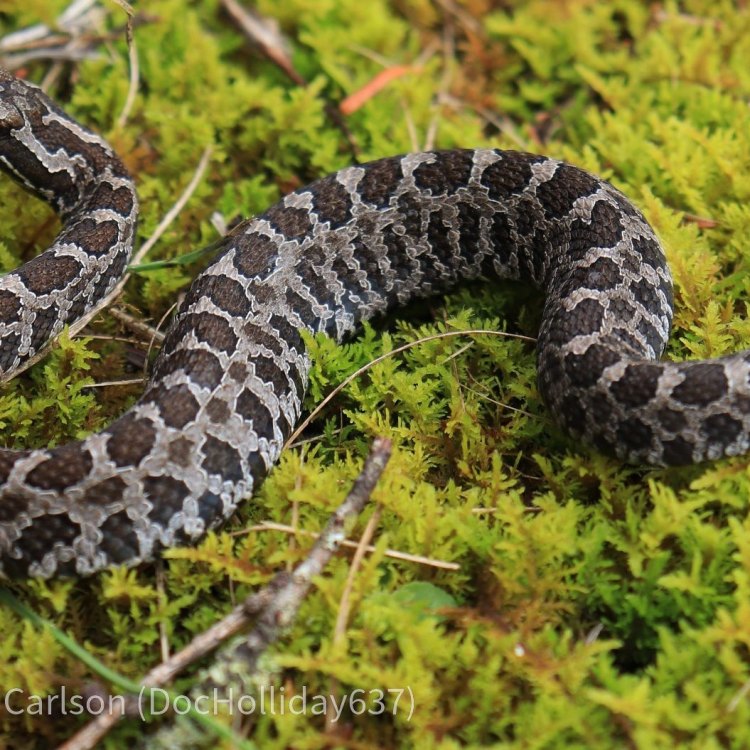
Massasauga
- Adult Size: 2.5-3 feet
- Average Lifespan: 10-15 years
- Reproduction: Ovoviviparous
- Reproductive Behavior: Mating occurs in the spring, with females giving birth to live young in late summer.
- Sound or Call: Rattlesnake-like rattling sound
- Migration Pattern: Non-migratory
- Social Groups: Solitary
- Behavior: Nocturnal and secretive
- Threats: Habitat loss, fragmentation, and degradation; persecution by humans
- Conservation Status: Threatened
- Impact on Ecosystem: As an apex predator, the Massasauga helps regulate the populations of its prey species.
- Human Use: No known significant human uses
- Distinctive Features: Rattle at the end of the tail
- Interesting Facts: 1. The Massasauga is the smallest venomous snake in North America. 2. It relies on camouflage rather than aggressive behavior when threatened. 3. The Massasauga's venom is used to immobilize small prey. 4. It plays an important role in the ecosystem by controlling rodent populations. 5. The species is declining due to habitat loss and human persecution.
- Predator: Birds of prey, mammals, and larger snakes
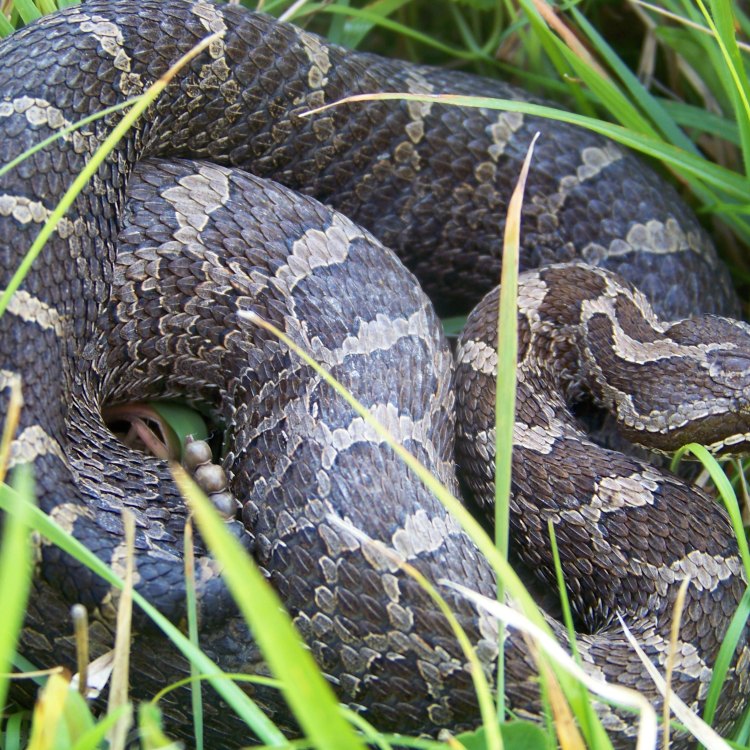
Sistrurus catenatus
The Enigmatic Massasauga: The Declining Apex Predator of North America
In the vast wilderness of North America, where diversity thrives and the balance of nature reigns supreme, there lies a small but mighty creature - the Massasauga. Often misunderstood and feared, this elusive snake is a vital part of the ecosystem and plays a crucial role in maintaining the delicate balance of its habitat. But despite its importance, the Massasauga is facing a dangerous decline, and it's time we shed some light on this enigmatic species.The Massasauga, scientifically known as Sistrurus catenatus, is a small venomous pit viper native to the temperate regions of North America PeaceOfAnimals.Com. It is also commonly referred to as the eastern massasauga, named after the Algonquian term for "great river-mouth." This name is a tribute to the fact that the Massasauga is found near freshwater sources such as lakes and rivers.
One of the most distinctive features of the Massasauga is its small size, with adults reaching an average length of 2.5-3 feet. Despite being the smallest venomous snake in North America, it should not be underestimated, as it possesses potent venom capable of causing severe harm to its prey and even humans.
The Massasauga has a relatively short lifespan of 10-15 years, making it a fleeting presence in the ecosystem. But during this short time, it plays a crucial role as an apex predator, helping to regulate the populations of its prey species.
Reproduction and Behavior
The Massasauga has a unique reproductive behavior that sets it apart from other snake species. It is ovoviviparous, which means that the eggs develop and hatch inside the mother's body, and she gives birth to live young Mojave Ball Python. This strategy is beneficial for the young snakes as they are already advanced and capable of fending for themselves upon birth.Mating for Massasaugas occurs in the spring, with females giving birth to live young in late summer. The litter size can range from 2-20 offspring, with the average being around 8. The young snakes are independent from the moment they are born, and they immediately start to explore their surroundings and hunt for prey.
But despite their independence, Massasaugas are primarily solitary creatures, preferring to live and hunt alone. They are nocturnal and secretive, spending most of their time hiding in underground burrows, rock crevices, or dense vegetation. This behavior makes them difficult to spot for predators and humans alike.
Sound or Call
One of the most recognizable features of the Massasauga is its distinctive sound or call. It produces a rattlesnake-like rattling sound by shaking its tail, which is made up of modified scales called "rattles." This sound is a warning to potential threats, and it serves as a crucial defense mechanism for the snake. It allows them to communicate with other snakes and avoid conflicts or unwanted confrontations.Threats to Survival
Despite its potent venom and warning rattle, the Massasauga relies heavily on camouflage rather than aggressive behavior when threatened. It blends in perfectly with its surroundings, making it challenging to spot, which helps it avoid predators. But sadly, this defense mechanism is not enough to protect them from the biggest threat they face - humans.The Massasauga's habitat is under constant threat from human activities such as urbanization, agriculture, and development. These activities result in habitat loss, fragmentation, and degradation, making it difficult for the snakes to find suitable places to live and reproduce. As a result, their population is declining rapidly, and they are now classified as a threatened species.
Human persecution is another significant threat to the Massasauga's survival. Due to the misconception that all snakes are dangerous and harmful, they are often killed out of fear. Illegal collection for the pet trade, as well as intentional killing by humans, also contribute to their decline.
Conservation Status and Impact on Ecosystem
The Massasauga is currently listed as a threatened species due to its declining population. But why is it so important to protect this elusive snake, you may ask? The Massasauga plays a vital role in the ecosystem as an apex predator. As a predator, it helps regulate the populations of its prey species, such as small mammals and other reptiles. This regulation is essential in maintaining the balance of nature and preventing overpopulation of these species, which can have detrimental effects on the ecosystem.Moreover, the Massasauga also helps control the population of pests and disease-carrying rodents, making them valuable for human health. Their venom, although dangerous, is also used to immobilize small prey, helping them survive in their natural habitat.
Interesting Facts
1. The Massasauga is not only the smallest venomous snake in North America, but it is also one of the smallest pit vipers globally, with the exception of a few species.2. Despite its venomous nature, the Massasauga is generally quite shy and prefers to avoid confrontation. It will attack only as a last resort if it feels threatened.
3. The venom of the Massasauga is hemotoxic, meaning it attacks the body's blood and tissues, causing severe pain, swelling, and necrosis (tissue death). If left untreated, a bite from a Massasauga can be fatal to humans.
4. The Massasauga is often referred to as the "swamp rattler" due to its preference for swampy areas and its distinguishing rattling sound.
5. The Massasauga is a significant cultural symbol for many First Nations communities in North America, and they play a significant role in their traditional medicines and beliefs.
Predators and Human Use
The Massasauga's predators vary depending on the region and habitat they inhabit. Birds of prey such as hawks, eagles, and owls are their primary predators, along with larger snakes and some mammal species.Despite its cultural significance and importance in the ecosystem, there are no known significant human uses for the Massasauga. In fact, the biggest threat to their survival comes from human activities. It is essential for humans to understand the crucial role this species plays in the ecosystem and take steps to protect them from further decline.
In Conclusion
The Massasauga is an enigmatic and elusive species that deserves our attention and protection. As the smallest venomous snake in North America, it relies on camouflage, its warning rattle, and its potent venom for survival. Unfortunately, these defenses are not enough to protect them from their biggest threat - humans. To ensure the continued existence of this vital apex predator, we must take action to mitigate the human activities that are causing their decline. The Massasauga may be small, but its impact on the ecosystem is significant, and it's time we appreciate and protect this incredible species.
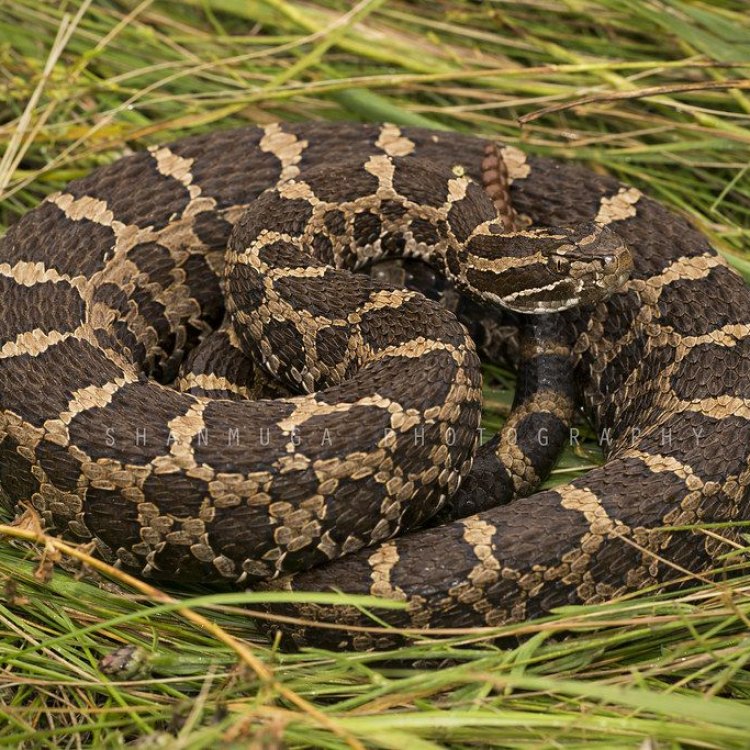
The Unique Massasauga: A Rare and Fascinating Reptile of North America
Disclaimer: The content provided is for informational purposes only. We cannot guarantee the accuracy of the information on this page 100%. All information provided here may change without prior notice.

